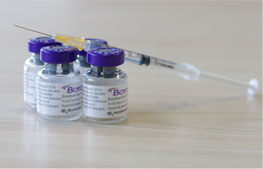Migraine

What is migraine?
Migraine is a common condition affecting over 3 million Australians. It commonly starts in childhood and early adulthood. Less than half of all migraine sufferers receive a formal diagnosis as it is often misdiagnosed as tension and sinus headache.
What causes migraine?
Migraine is a complex process that can be activated by numerous triggers including stress, change in lifestyle factors (e.g. diet, sleep) and strong sensory stimuli such as bright lights, loud noises and strong smells. The process starts with gradual progressive shutting down of the brain, typically spreading from the back of the brain (visual center). The release of chemicals in the brain leads to dilatation of blood vessels
and inflammation of surrounding tissue. The sensory nerves (trigeminal system) of the head and neck become active, leading to pain. Family history of migraine is common in migraine sufferers, suggesting certain genetic susceptibility.
What are the symptoms of migraine?
Migraine may be preceded by early warning symptoms including yawning, thirst and changes in mood, appetite and behaviour. About a quarter of migraine sufferers experience associated “aura”. The most common form of aura is various visual experiences such as zigzag lines, flickering, patchy loss of vision and blurred vision. This may last up to an hour. Some patients may experience other neurological symptoms such as tingling, speech disturbances, dizziness and even weakness. Headache usually follows and is often one sided and throbbing, lasting several hours to several days. Common associated symptoms include nausea, vomiting and sensitivity to smell, light and sound. Even after resolution of headache, significant tiredness and fatigue may linger on for another day or so.
What is the treatment of migraine?
Migraine management involves trigger identification and avoidance, abortive therapy and prevention therapy. Abortive therapy is used at the onset of migraine with the aim of stopping the migraine process. Common abortive therapies include aspirin, anti-inflammatory medications, triptans (sumatriptan, naratriptan, zolmitriptan, eletriptan and rizatriptan) and anti-nausea medications. Prevention therapy is taken regularly to try to reduce the frequency of migraine in those with frequent attacks. Common preventatives include beta-blockers (e.g. propranolol), calcium channel blockers (verapamil), anti seizure medications (e.g. topiramate, valproate), anti depressants (e.g. amitriptyline) and serotonin antagonists (e.g. pizotifen).
What is medication overuse headache (MOH)?
Excessive and frequent use of any abortive treatments, particularly triptans and opioids (e.g. codeine containing medications), over a prolonged period of time can perpetuate the headache process, leading to medication overuse headache. The nature of headache can change, often becoming more dull and widespread. Other abortive and preventative medications then become ineffective. The best treatment for MOH is prevention. Triptans and opioids should not be used for more than 10 days per month. Over the counter medications such as aspirin and anti-inflammatory medications should not be used for more than 15 days a month. MOH often accompanies chronic migraine and does not abate until the culprit medication is stopped. This is facilitated by the use of effective preventative treatment. Headache often gets worse in the initial days but will start to improve over days to weeks.

What is the role of Botulinum toxin (Botox) in migraine management?
In 2013, Botox was approved by PBS for the treatment of chronic migraine in adults. The usefulness of botulinum toxin in the treatment of headache was first recognised when patients having cosmetic injections around the forehead and eyebrows reported improvement to their chronic headache. Further research subsequently confirmed the effectiveness of botulinum toxin in the treatment of chronic migraine.
To qualify for the use of Botox, the patient must satisfy the following criteria:
- Has experienced an average of 15 or more headache days per month, with at least 8 days of migraine, over a period of at least 6 months AND
- Has experienced inadequate response, intolerance or contraindication to at least three migraine prophylactic medications

